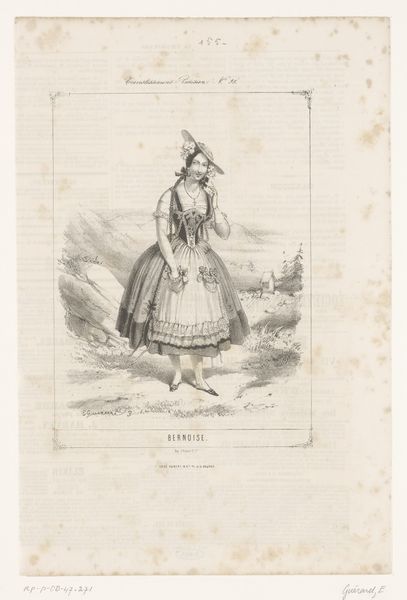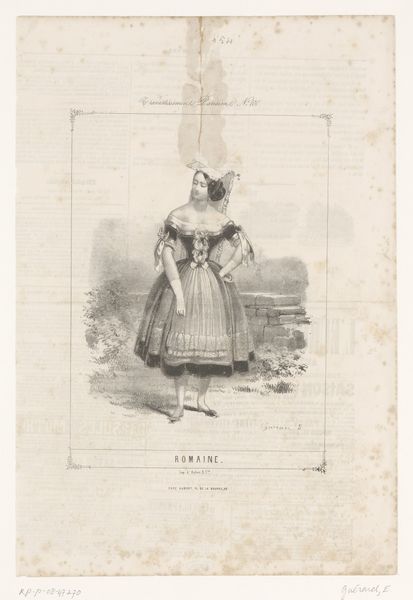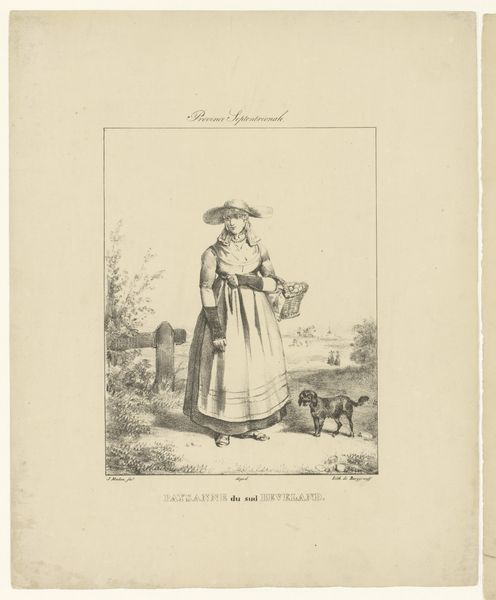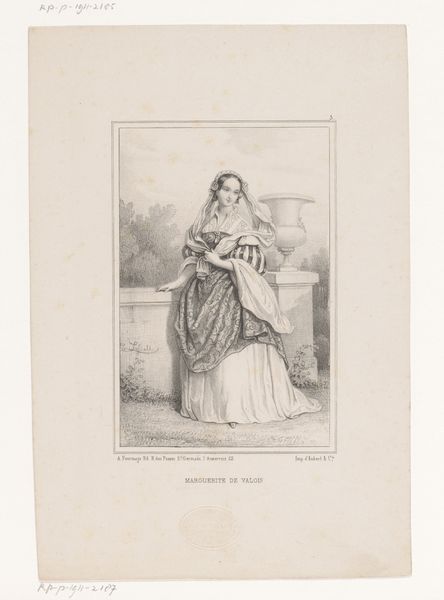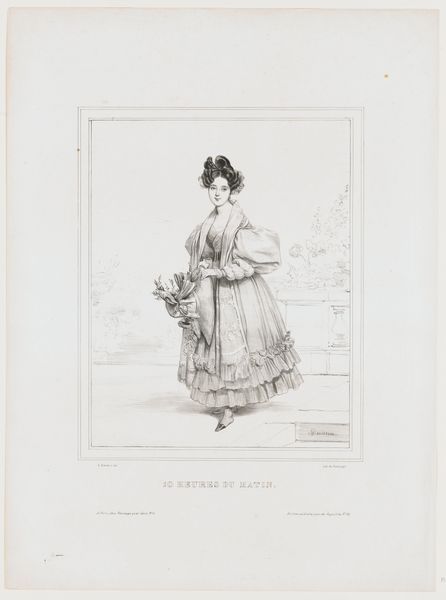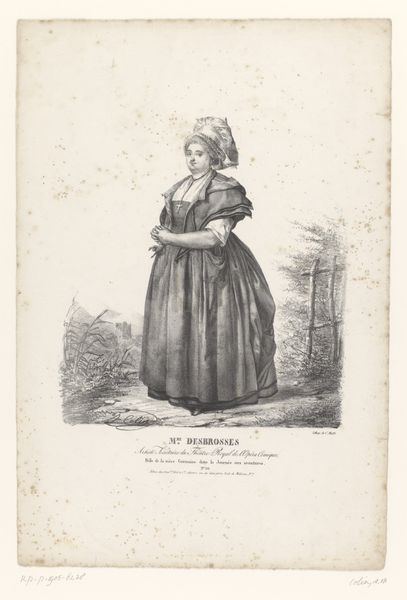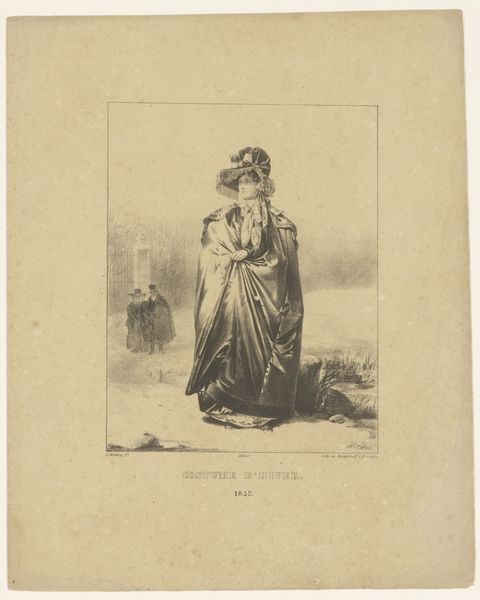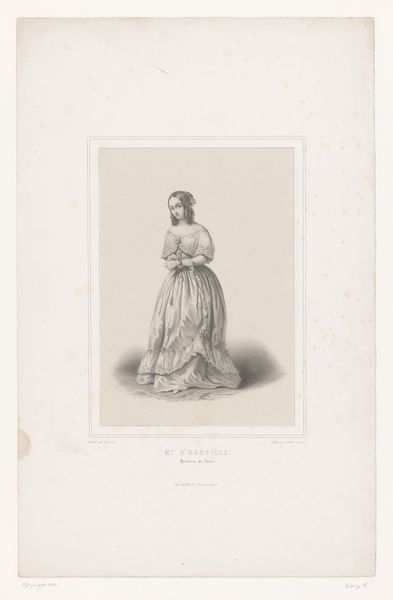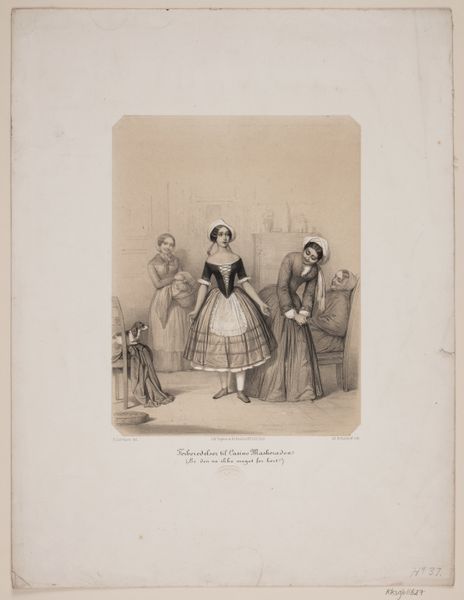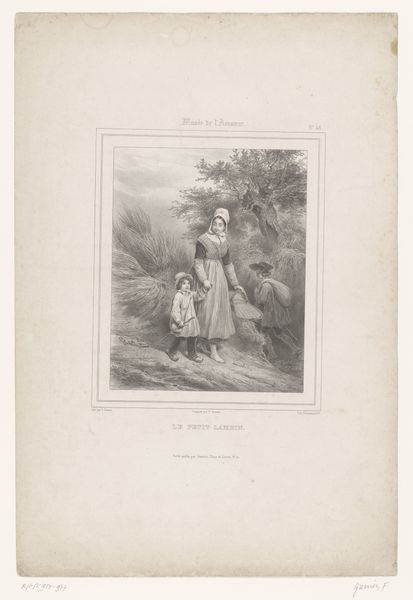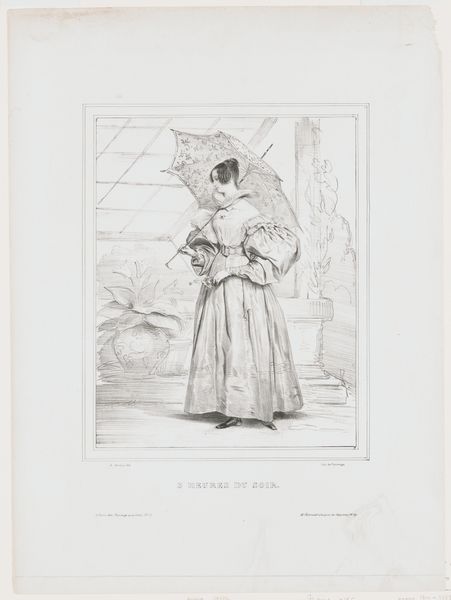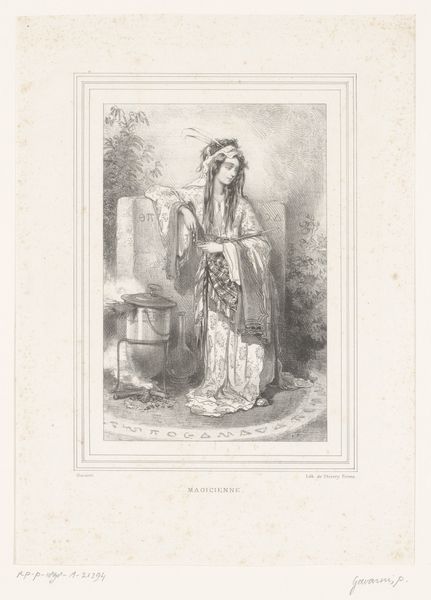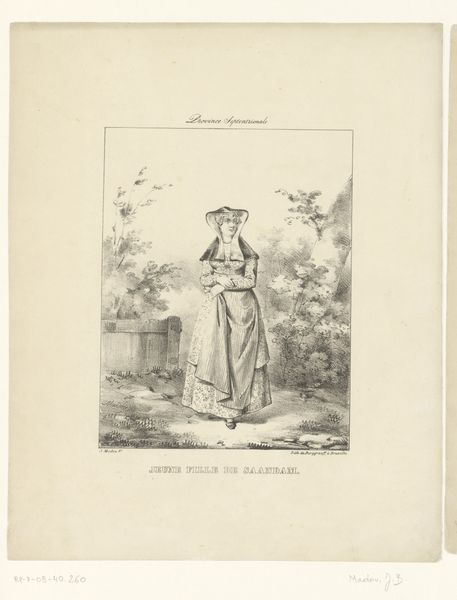
drawing, print, paper, engraving
#
portrait
#
drawing
#
aged paper
#
toned paper
#
light pencil work
#
quirky sketch
# print
#
pencil sketch
#
old engraving style
#
figuration
#
paper
#
personal sketchbook
#
romanticism
#
line
#
sketchbook drawing
#
pencil work
#
sketchbook art
#
engraving
Dimensions: height 363 mm, width 247 mm
Copyright: Rijks Museum: Open Domain
Editor: This is "Vrouw in Griekse klederdracht," or "Woman in Greek costume," made in 1844 by Eugène Guérard. It seems to be a print, maybe an engraving on paper. It reminds me of fashion plates but with an exotic flair. What draws your eye in this piece? Curator: The costume itself is a potent symbol. The image resonates with Romantic ideals and the European fascination with "exotic" cultures. But this isn't just a document of fashion. Editor: How so? Curator: Consider what Greek dress might represent in the 1840s. Remember the Greek War of Independence? To depict a woman in traditional garb connects her, and by extension, Greece itself, to ideas of freedom, resilience, and a glorious past. What emotions does her pose convey to you? Editor: She looks… serene, but also a bit melancholic, almost leaning on the rocks as if for support. Curator: Exactly! This ambiguity contributes to the symbolic complexity. Guérard uses a specific visual language here to present a narrative much bigger than just a pretty dress. Editor: I see your point! It's less about the clothes themselves and more about what they represent historically and culturally. Curator: Precisely. The image becomes a visual echo of a nation's story, and it allows viewers of that era to conjure up images tied to the idea of Greek Independence. Editor: This really changes how I see it. I thought it was just a portrait, but it is layered with so much historical and cultural significance! Curator: Yes, and by understanding those symbols, we understand a bit more of how people perceived Greece in that period.
Comments
No comments
Be the first to comment and join the conversation on the ultimate creative platform.
